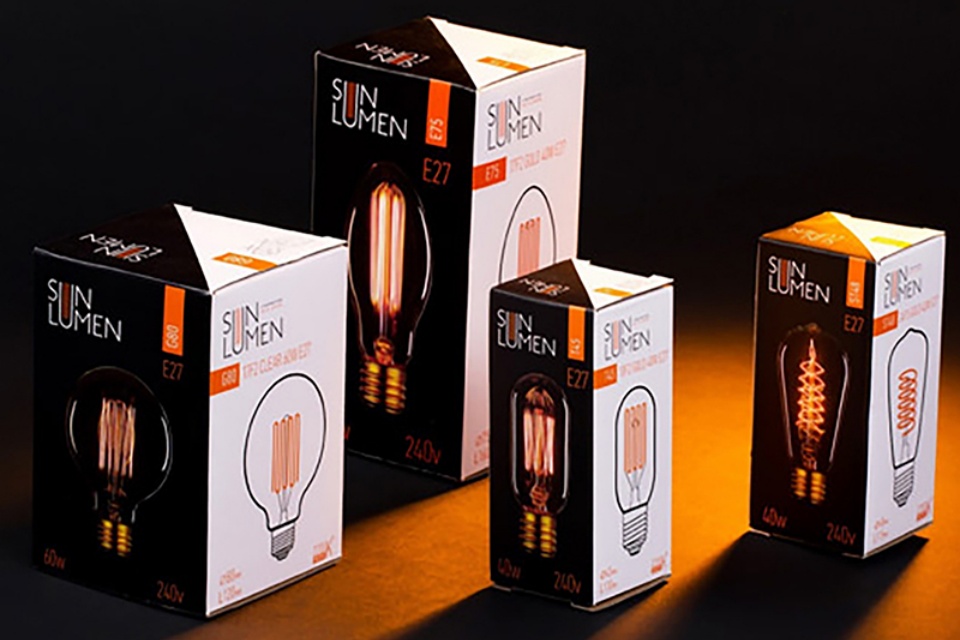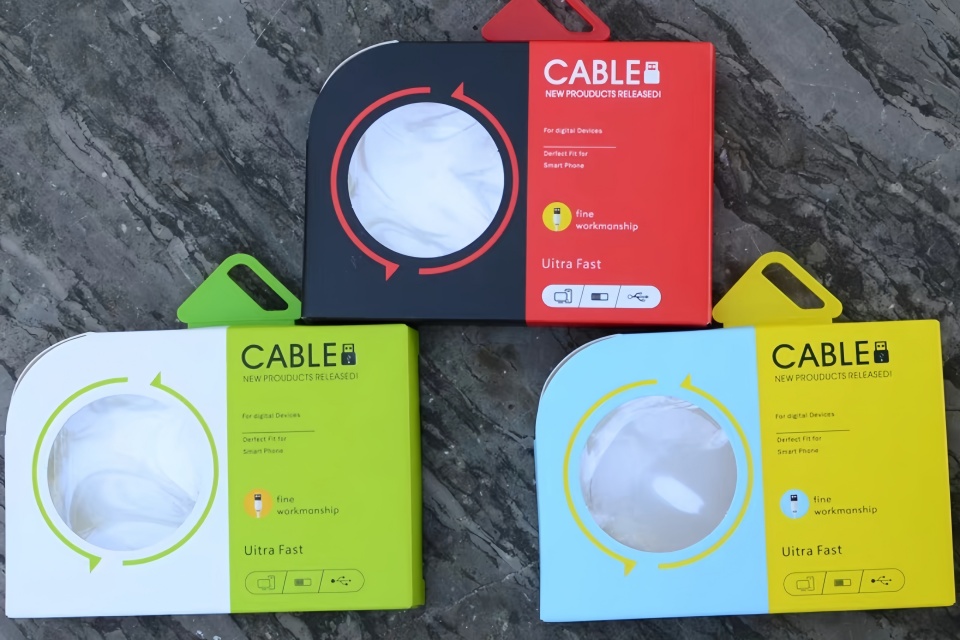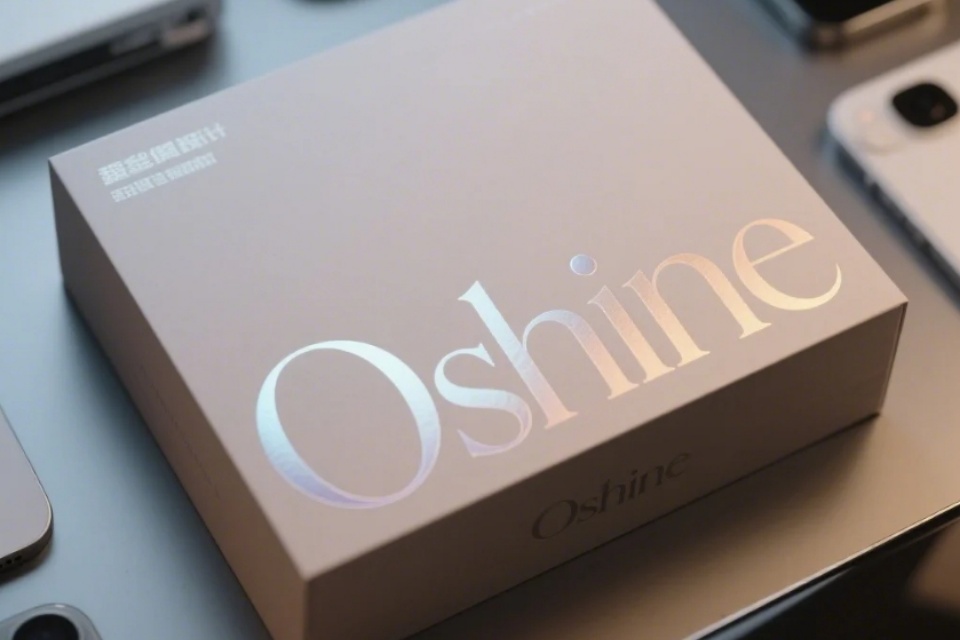Industry News
Consumer Electronics Packaging Design Trends
Consumer Electronics Packaging Design Trends
Summary
Consumer electronics packaging design trends are increasingly characterized by sleek minimalism and high-tech aesthetics, reflecting broader cultural shifts towards simplicity and sophistication. This evolution in packaging is notable as it not only enhances brand recognition but also aligns with consumer expectations for modern, eco-friendly products. Companies are adopting minimalist designs that feature clean lines, ample negative space, and limited color palettes, allowing essential product attributes to take center stage while reducing cognitive load for consumers.
The focus on high-tech looks in packaging emphasizes both functionality and visual appeal, enabling brands to convey product sophistication through understated design elements. This approach caters to the demand for interactive consumer experiences, with technologies such as QR codes and NFC tags integrated into packaging for enhanced engagement. As the electronics market becomes more competitive, the need for packaging that effectively communicates product benefits while maintaining aesthetic allure has never been more crucial.
However, the adoption of sleek minimalism and high-tech designs also presents challenges. Striking the right balance between visual appeal and product differentiation is essential; excessive minimalism can risk rendering products bland or indistinct in a crowded marketplace. Additionally, brands must navigate the increasing consumer demand for sustainable practices in packaging, prompting them to seek eco-friendly materials and designs without compromising on style or functionality.
In summary, the current trends in consumer electronics packaging reflect a dynamic interplay of aesthetics, functionality, and sustainability, shaping how brands connect with consumers in an ever-evolving marketplace. The success of these designs hinges on their ability to engage consumers, convey brand values, and meet the growing expectations for environmentally responsible practices.
Historical Context
The evolution of consumer electronics packaging design can be traced back to the broader history of product packaging, which has undergone significant transformations over centuries. Historically, product packaging served essential functions such as containing, protecting, and preserving items, but it has evolved to also communicate brand identity and enhance consumer engagement.
Early Innovations in Packaging
The origins of packaging can be linked to the basic need for protection and transportation of goods. Over the last 150 years, technological advancements and changing consumer behaviors have dramatically shaped the packaging landscape, particularly in the context of the rise of consumer electronics from the late 19th century onwards. During this period, competitive pressures necessitated innovative approaches to packaging, transforming it into a multi-functional artifact that not only secures products but also promotes them on retail shelves.
The Impact of Technology
As consumer electronics became more prevalent, packaging began to incorporate features tailored to the delicate nature of these products. The focus shifted towards ensuring that packaging was not only protective but also user-friendly and visually appealing. For instance, packaging design now integrates smart technologies such as QR codes and NFC tags, allowing for an interactive consumer experience while providing essential product information.
Cultural and Economic Factors
The cultural context surrounding consumer electronics packaging also reflects broader societal values, such as sustainability and technological progress. As environmental concerns have gained traction, the demand for eco-friendly materials and designs has led to innovative packaging solutions that prioritize sustainability without compromising aesthetic appeal. This evolution aligns with consumer expectations for brands to adopt responsible practices, pushing companies to adapt continuously to regulatory changes and consumer preferences regarding waste disposal and material use.
Future Trends Rooted in Historical Context
Looking ahead, the future of consumer electronics packaging will be shaped by historical trends that emphasize sustainability, advanced technology, and personalization. As packaging design continues to integrate sophisticated materials and technologies, it will reflect the ongoing evolution of consumer expectations, echoing the rich history of innovations that have defined the packaging industry over the years.
Sleek Minimalism
Sleek minimalism in consumer electronics packaging design emphasizes a streamlined aesthetic that combines simplicity with sophistication. This approach is particularly effective in a market where brands compete for immediate consumer attention, as modern brands have only a split second to make an impression before consumers' focus shifts elsewhere. By adopting minimalist designs, companies can create packaging that is not only visually appealing but also requires less cognitive effort for consumers to process, effectively communicating their brand message with clarity and precision.
Characteristics of Sleek Minimalism
Sleek minimalism is defined by its clean lines, ample use of negative space, limited color palettes, and clear typography. This aesthetic not only conveys luxury and high-end appeal but also enhances brand recognition by highlighting the product's core attributes. The essence of minimalist packaging lies in stripping away unnecessary design elements, thereby allowing the essential features of the product to shine through. For example, using a single color, minimal iconography, and straightforward text can create an authentic and pure visual identity.
Benefits of Minimalist Packaging
The adoption of sleek minimalism in packaging design offers several advantages. It promotes increased product visibility on crowded shelves, enhances brand recognition, and can lead to reduced production costs due to the use of fewer materials. Additionally, minimalist packaging often aligns with contemporary values of sustainability, appealing to consumers who prioritize eco-friendliness in their purchasing decisions. By focusing on a less-is-more philosophy, brands can create a memorable unboxing experience that resonates with consumers and reinforces the brand's image as modern and sophisticated.
Challenges and Considerations
While sleek minimalism can elevate a brand's appeal, there are challenges associated with this design approach. Striking the right balance is crucial, as excessive minimalism may come off as bland or generic, failing to differentiate a product in a competitive market. It is essential for brands to work with designers who understand the nuances of minimal design, ensuring that the packaging not only looks good but also effectively communicates the brand's unique value proposition. Thus, successful minimalist packaging requires thoughtful consideration of shape, materials, typography, and color selection to create a distinctive and functional package that resonates with consumers.
High-Tech Looks
Design Philosophy
High-tech packaging design often embodies a sleek and minimalist aesthetic, characterized by clean lines, neutral color schemes, and minimal brand text. This design approach emphasizes the use of crisp fonts and subtle shapes, which can effectively communicate the sophistication and functionality of tech products. Minimalist packaging helps distill complex functionalities into a refined and understandable form, allowing consumers to engage with high-tech gadgets in a more intuitive manner.
Sustainability and Efficiency
As consumer awareness of environmental issues increases, tech brands are also focusing on sustainable packaging solutions. The minimalist approach not only reduces production costs through the use of fewer materials but also aligns with eco-friendly practices that prioritize waste reduction. Companies adopting this design philosophy can achieve a dual advantage: lowering their carbon footprint while also passing on savings to consumers in the form of competitive pricing.
Psychological Impact
The psychological appeal of high-tech looks is significant, as consumers often gravitate toward products that exhibit a sense of calm and order. Packaging that strips away unnecessary elements helps create a more inviting and comfortable decision-making environment for consumers, allowing them to quickly glean essential information about the product. This clarity can enhance brand recognition and positively influence purchasing decisions.
Future Trends
Sustainability in Packaging
Sustainability in packaging is increasingly becoming a critical aspect of product design, particularly in the consumer electronics sector. This approach involves utilizing materials that are biodegradable, recyclable, or sourced from renewable resources, thereby minimizing the environmental impact throughout the entire lifecycle of the package, from design and production to disposal methods.
Trends in Sustainable Materials
As consumer demand for eco-friendly products rises, companies are adopting innovative materials such as plant-based plastics, mushroom-based foams, and organic compounds that leave minimal environmental footprints. These sustainable materials not only contribute to reducing waste but also help businesses achieve their sustainability goals by significantly lowering carbon emissions compared to traditional packaging options. Biodegradable packaging, made from natural materials like cornstarch and sugarcane bagasse, is becoming popular, particularly for protective materials like cushions and pouches.
Consumer Preferences and Market Impact
Today's consumers prioritize sustainability, often expecting environmentally friendly packaging when making purchasing decisions. This shift in consumer behavior has prompted brands to adopt practices such as minimalist packaging designs that reduce excess materials and enhance aesthetic appeal while encouraging refillable and reusable packaging solutions. Such initiatives not only address environmental concerns but also enhance brand reputation and consumer loyalty.
Challenges and Innovations
While sustainable packaging may initially seem more costly, the long-term savings due to reduced material waste and lower shipping costs can outweigh upfront investments. Moreover, advancements in packaging technologies, including machine learning, have enabled companies to optimize the performance of sustainable materials, making it easier to produce eco-friendly products without compromising on quality.
Future Directions
Looking ahead, the focus on sustainability in packaging design is expected to grow, with a particular emphasis on circular packaging that promotes reuse and recycling. The integration of recycled materials and innovative biodegradable options will continue to shape the landscape of consumer electronics packaging, ensuring that companies not only meet regulatory standards but also resonate with the values of environmentally conscious consumers. As sustainability becomes essential, brands that embrace these practices will likely find themselves at a competitive advantage in an increasingly eco-aware market.
Personalization and Smart Packaging
The trend towards personalization in packaging is expected to accelerate, driven by advancements in artificial intelligence and digital printing technologies. Custom packaging designs tailored to specific products not only reduce waste but also enhance the overall consumer experience. Smart packaging, which incorporates technologies such as QR codes and RFID, will play a significant role in connecting consumers with digital content and enhancing product interactivity. This shift aligns with consumer expectations for packaging that offers more than just protection but also engages and informs.
Technological Innovations
The integration of technology in packaging design is set to revolutionize the industry. Smart packaging solutions that incorporate Internet of Things (IoT) capabilities will provide real-time information and improve supply chain efficiency. These advancements will allow for better product safety and enhanced consumer experiences, meeting the rising demand for tech-savvy packaging solutions.
Minimalism and Bold Visuals
Minimalist packaging, characterized by sleek designs and a focus on essential elements, is emerging as a prominent trend in 2023. This approach not only aligns with sustainability efforts but also resonates with consumers seeking simplicity and elegance in product presentation. Coupled with bold visual elements, minimalist designs are poised to capture attention on retail shelves and online platforms alike, thereby reinforcing brand identity in a competitive market.
E-commerce Packaging
As e-commerce continues to thrive, the packaging design for online orders is becoming increasingly important. Innovative and secure packaging solutions that ensure product safety during transit while also appealing to consumers will be paramount. The growth of online shopping necessitates packaging that not only protects but also delights consumers upon delivery, thus enhancing the overall brand experience.
Sustainability in Packaging
Sustainability in packaging is increasingly becoming a critical aspect of product design, particularly in the consumer electronics sector. This approach involves utilizing materials that are biodegradable, recyclable, or sourced from renewable resources, thereby minimizing the environmental impact throughout the entire lifecycle of the package, from design and production to disposal methods.
Trends in Sustainable Materials
As consumer demand for eco-friendly products rises, companies are adopting innovative materials such as plant-based plastics, mushroom-based foams, and organic compounds that leave minimal environmental footprints. These sustainable materials not only contribute to reducing waste but also help businesses achieve their sustainability goals by significantly lowering carbon emissions compared to traditional packaging options. Biodegradable packaging, made from natural materials like cornstarch and sugarcane bagasse, is becoming popular, particularly for protective materials like cushions and pouches.
Consumer Preferences and Market Impact
Today's consumers prioritize sustainability, often expecting environmentally friendly packaging when making purchasing decisions. This shift in consumer behavior has prompted brands to adopt practices such as minimalist packaging designs that reduce excess materials and enhance aesthetic appeal while encouraging refillable and reusable packaging solutions. Such initiatives not only address environmental concerns but also enhance brand reputation and consumer loyalty.
Challenges and Innovations
While sustainable packaging may initially seem more costly, the long-term savings due to reduced material waste and lower shipping costs can outweigh upfront investments. Moreover, advancements in packaging technologies, including machine learning, have enabled companies to optimize the performance of sustainable materials, making it easier to produce eco-friendly products without compromising on quality.
Future Directions
Looking ahead, the focus on sustainability in packaging design is expected to grow, with a particular emphasis on circular packaging that promotes reuse and recycling. The integration of recycled materials and innovative biodegradable options will continue to shape the landscape of consumer electronics packaging, ensuring that companies not only meet regulatory standards but also resonate with the values of environmentally conscious consumers. As sustainability becomes essential, brands that embrace these practices will likely find themselves at a competitive advantage in an increasingly eco-aware market.
Consumer Preferences
Consumer preferences play a pivotal role in shaping the design trends of packaging within the consumer electronics sector. Today, authenticity and sustainability are paramount; consumers are increasingly drawn to brands that transparently communicate their values through packaging. Many shoppers favor products that utilize eco-friendly materials, which reflects their growing awareness of environmental issues and preference for responsible consumption. This shift has prompted companies to innovate their packaging solutions to meet the demand for sustainable options while maintaining aesthetic appeal.
Emotional Connection and Brand Loyalty
Emotional responses significantly influence consumer purchasing decisions. Packaging that evokes positive feelings can create memorable experiences, fostering brand loyalty and encouraging repeat purchases. For instance, when consumers feel a connection with a brand through its packaging—such as recognizing personal values or experiences—they are more likely to choose that brand over competitors. Moreover, sharing relatable stories or incorporating emotional triggers in design can amplify this connection, enhancing consumer loyalty.
The Importance of Functionality
Functionality is another crucial aspect that consumers consider when evaluating packaging. Innovative designs that offer practical features, such as resealable closures and easy-open tabs, contribute to consumer satisfaction and preferences. Packaging must not only be visually appealing but also serve its primary purpose effectively. This balance between aesthetics and functionality is essential for attracting and retaining customers, as consumers expect packages to protect the product while also being convenient to use.
Trends Towards Personalization and Minimalism
As consumer values continue to evolve, there is a notable trend towards personalization in packaging design. Shoppers are increasingly seeking unique and customized experiences, prompting brands to offer personalized packaging solutions that cater to individual preferences. Additionally, sleek and minimalist designs have gained popularity, as consumers prefer packaging that is simple yet stylish. This aesthetic aligns well with the high-tech look characteristic of many modern consumer electronics, allowing brands to convey sophistication and innovation.
Transparency in Packaging
Transparency also plays a critical role in influencing consumer choices. Clear packaging that showcases the product inside helps build trust, as it sets accurate expectations and highlights quality. Labels that provide detailed information further empower consumers to make informed purchasing decisions, enhancing brand loyalty as they feel more connected to companies that prioritize honesty and transparency.
Challenges in Packaging Design
Balancing Aesthetics and Functionality
One of the primary challenges in packaging design is achieving a balance between aesthetics and functionality. Designers must ensure that packaging not only looks appealing but also serves its practical purpose. Thoughtful design considerations, such as incorporating features like resealable lids or easy-pour spouts, can enhance usability while maintaining visual appeal. Failure to address this balance can lead to products that, despite their attractive packaging, fail to meet consumer expectations for convenience and ease of use.
Cost vs. Value
Another significant challenge is navigating the delicate relationship between cost and perceived value. Brands need to carefully assess the materials and processes used in packaging to ensure that the investment aligns with consumer perceptions. High-quality materials can justify higher price points, yet if consumers do not recognize the value added by premium packaging, it can lead to dissatisfaction and impact sales negatively. Striking the right balance is crucial for brand success in a competitive marketplace.
Sustainability Considerations
As environmental concerns continue to rise, the challenge of incorporating sustainable practices into packaging design has become increasingly important. Brands face pressure to adopt eco-friendly materials while still delivering visually appealing packaging. The transition from traditional materials like plastics to alternatives such as bioplastics and recycled paper requires not only a change in sourcing but also innovation in design and production processes. Moreover, the effectiveness of waste collection and recycling systems must improve to support sustainable initiatives in packaging design.
Evolving Consumer Preferences
Consumer preferences are continuously evolving, presenting another challenge for packaging designers. Trends such as minimalism and 'less is more' approaches are gaining traction, as consumers gravitate toward simple and uncluttered designs that convey clarity and calmness. Keeping pace with these changing tastes while ensuring that packaging still communicates brand identity and product information can be difficult. Additionally, brands must navigate the challenge of differentiating their products in an increasingly crowded marketplace.
Technology Integration
The integration of advanced technologies in packaging design, such as machine learning and automation, poses both opportunities and challenges. While these technologies can enhance the performance and selection of sustainable materials, they also require a level of expertise and investment that can be daunting for some brands. Adapting to new technologies while ensuring they align with design goals and consumer expectations is an ongoing challenge in the packaging landscape.
Psychological Factors
Finally, understanding the psychological impact of packaging on consumer behavior is vital yet challenging. Research indicates that consumers often respond more favorably to visually appealing and thoughtfully designed packaging, which can lead to increased purchase intention. However, designers must also consider how overly complex designs may overwhelm consumers, leading to confusion and potential loss of sales. Striking the right balance between engaging design and consumer comfort is essential for effective packaging strategy.
Categories
Latest News
Contact Us
Contact: Aaron Lee
Phone: +8613570866244
Tel: +8675529490260
Add: Li Songlang 2nd Industrial Zone,No.18,FengTang Rd,Guangming New District


